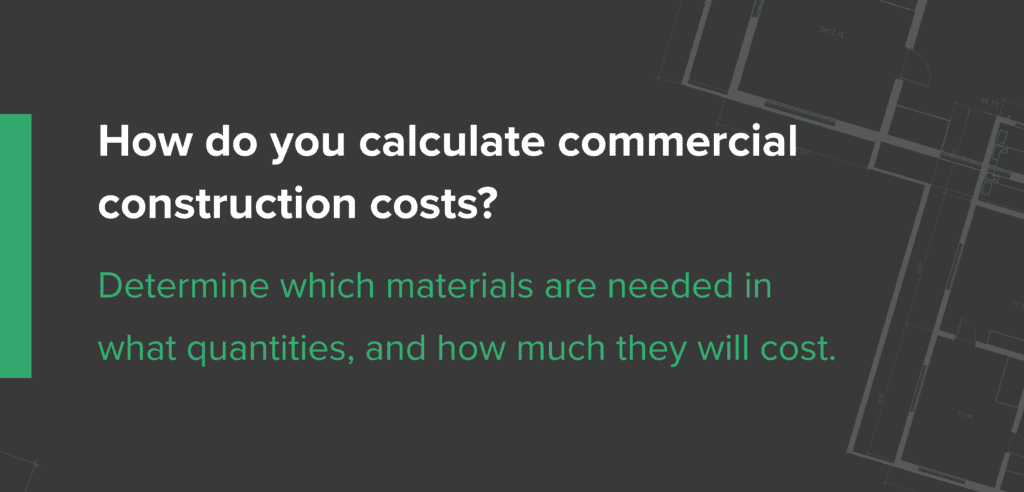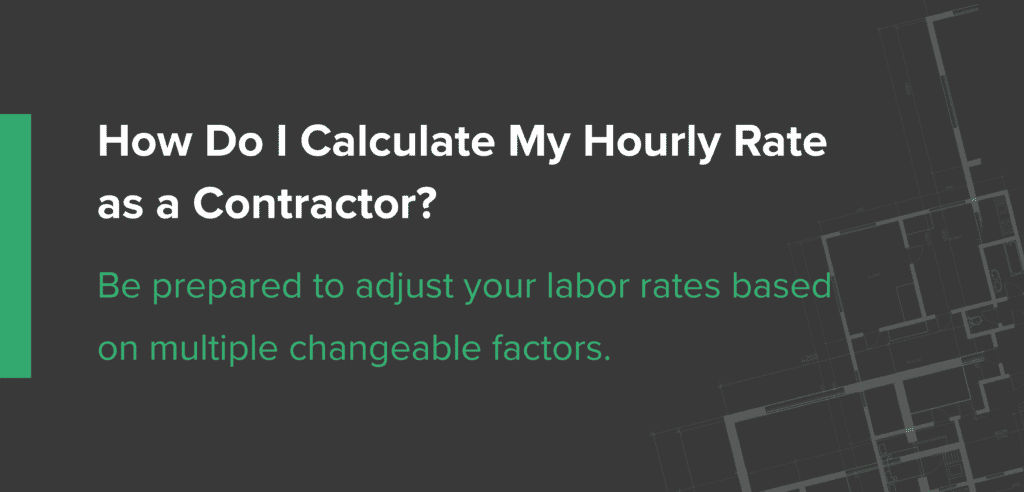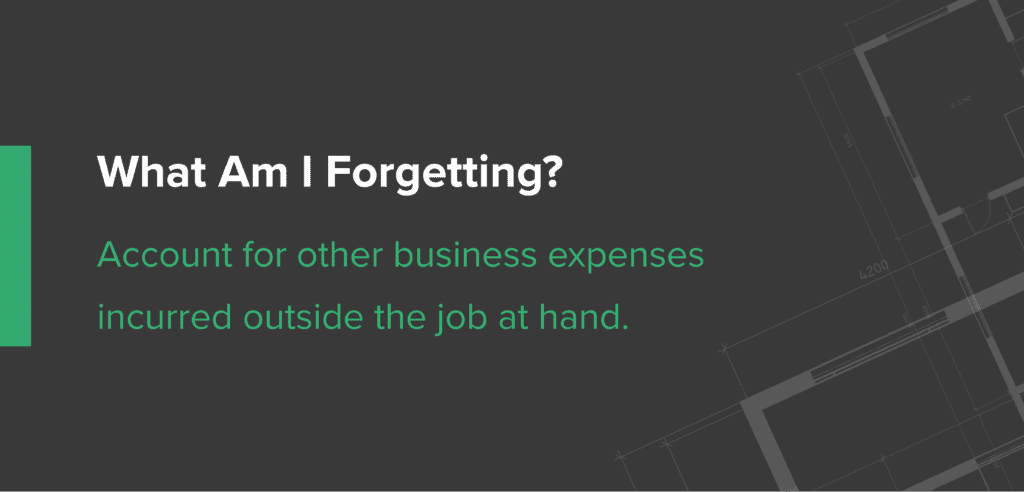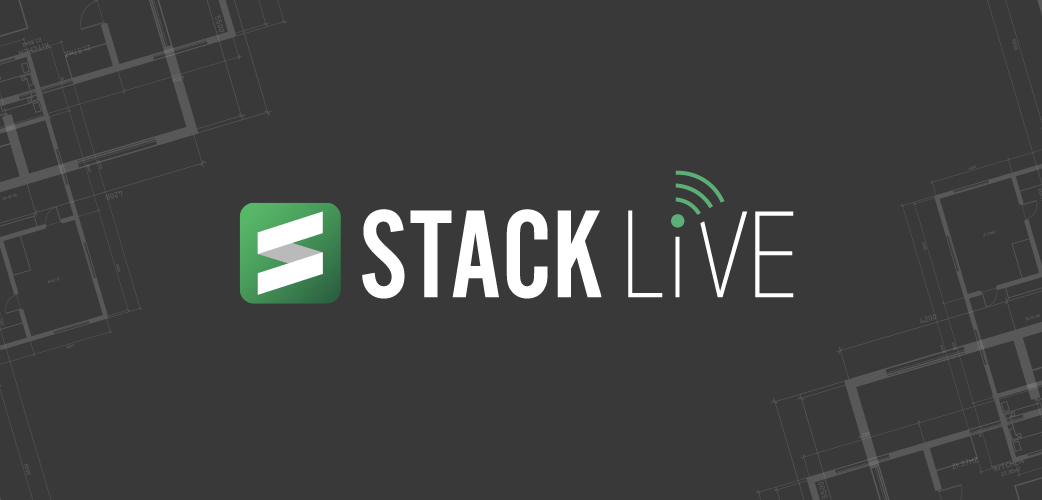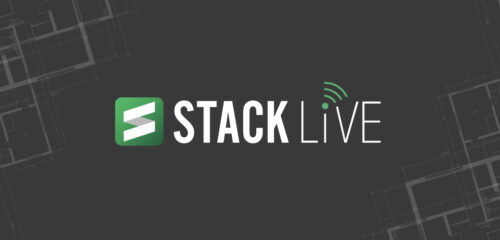How to price a job as a construction contractor is one of the most common issues faced by folks who are just starting out. It’s a legitimate concern: you don’t want to overbid and risk pricing yourself out of a job, but underbidding is just as problematic, since you could end up losing money even if you do win.
So how do you price a construction job?
To price a job in construction, you need to consider the three elements of your material quality and costs, your hourly rate as a contractor, and other business expenses incurred outside the job at hand. We dive deeper into each one below.
While you will get better with practice, you need to be sure you’re starting out with the right tools to help you generate accurate, professional proposals right from the start.
The Top Three Construction Price Questions And How To Answer Them
1. How Do You Calculate Commercial Construction Costs?
Determine what materials are needed in what quantities, and how much they’ll cost.
This is the first step in learning how to price a job in construction. This may seem insurmountable if you’re just starting out, but actually there’s a simple way to get much of this information. The plans and specs in the project documents will include the types of materials required to complete the work.
To figure up how much of each material you’ll need, you’ll perform a takeoff on the blueprints. Depending on your trade, you might do counts (such as the number of light fixtures required) or measurements (linear, square, or cubic feet for drywall, paint, concrete, etc.).
With the proper tools at your fingertips, this complex step can be simplified from a days-long process to a few hours. A preconstruction platform like STACK can also apply items and assemblies to your takeoffs, generating an itemized estimate of materials needed.
Because construction material prices vary across regions and by supplier, once you have your quantities, you’ll need to begin your material pricing research. There are pricing guides out there, such as RS Means, that can give you a starting point, but you must dig a little deeper and find some actual pricing from suppliers. You can look up products on home improvement warehouse sites for comparison or call around to local suppliers, as developing positive working relationships with them will be important for long term success.
Most specialty suppliers are happy to take the information from your takeoff and provide a detailed quote from it, and some will even do takeoffs for you, although you should always plan to also do your own, as they would not be liable for any mistakes.
Now you know what you need to purchase for a job and how much you need to budget for those materials.
2. How Do I Calculate My Hourly Rate as a Contractor?
Be prepared to adjust your labor rates based on multiple changeable factors.
This is the next important question you need to ask when you’re figuring out how to price a job in construction. Take into consideration your own skill level and how long it would take you to complete a task under ideal conditions. From there, you can determine the labor rates of your crew.
If you have expert laborers with many more years of experience than yourself, you can expect them to take less time to complete a task (but also that you pay them higher wages for that expertise – to determine salary, examine job postings in your area and ask other contractors).
The opposite goes for newbies who are learning on the job – they’ll take much longer to finish the work, so estimate accordingly.
Aside from crew skill level, think about factors such as working conditions – tight spaces, extreme temperatures, or projects with complex or unclear specs. These types of situations can tax workers much more than ideal working conditions would, so your rates should increase to compensate for added physical discomfort or mental work.
Finally, don’t forget to include paid time off in your rates. While your employees are enjoying the benefit of a paid vacation or sick leave, you are still paying them while they’re not onsite, so you need to add in those extra planned hours of non-work to the rates for hours worked.
3. What Am I Forgetting?
Account for other business expenses incurred outside the job at hand.
The final question in determining how to price a construction job is the one that’s most often overlooked. This point cannot be stressed enough, especially if you’re new to the contracting business. Do not assume that your costs are only associated with the job you’re bidding. In addition to those materials, you have a company to run. So, you’ve got to account for all of your other costs that add up over the course of a year and factor those into your prices. Do you rent office space? Do you have office staff using computers and software? What about your equipment used out in the field?
All of these and much more are overhead costs that need to be included in your bids. Figure up all business expenses from the past year and new ones expected for the year ahead. It might be helpful to work with a tax professional, accountant, or business consultant to make sure you have a strong grasp of your overhead costs and how to divide them up among bids, as well as examining ways to reduce those costs.
When you know your overhead costs, you can then use STACK to easily account for them in your estimate.

Construction Price Formula Calculator
After you’ve figured out all your numbers, there are two formula you can use to calculate just how to price your job. Those formulas are:
Cost X Markup = Price
Income – Cost of goods that have been sold – Expenses = Net Profit
Once you’ve done that you can move to the next steps.
The Next Step: Profits and Price Increases
Now you have a handle on how much you need to charge to cover your expenses and crew wages as you’re starting out with your business. Work a few jobs, gain experience, and establish yourself as a strong player in your local market.
Then you’ll be ready to take the next step to determine how you can make a profit and even raise your prices as you gain experience.
